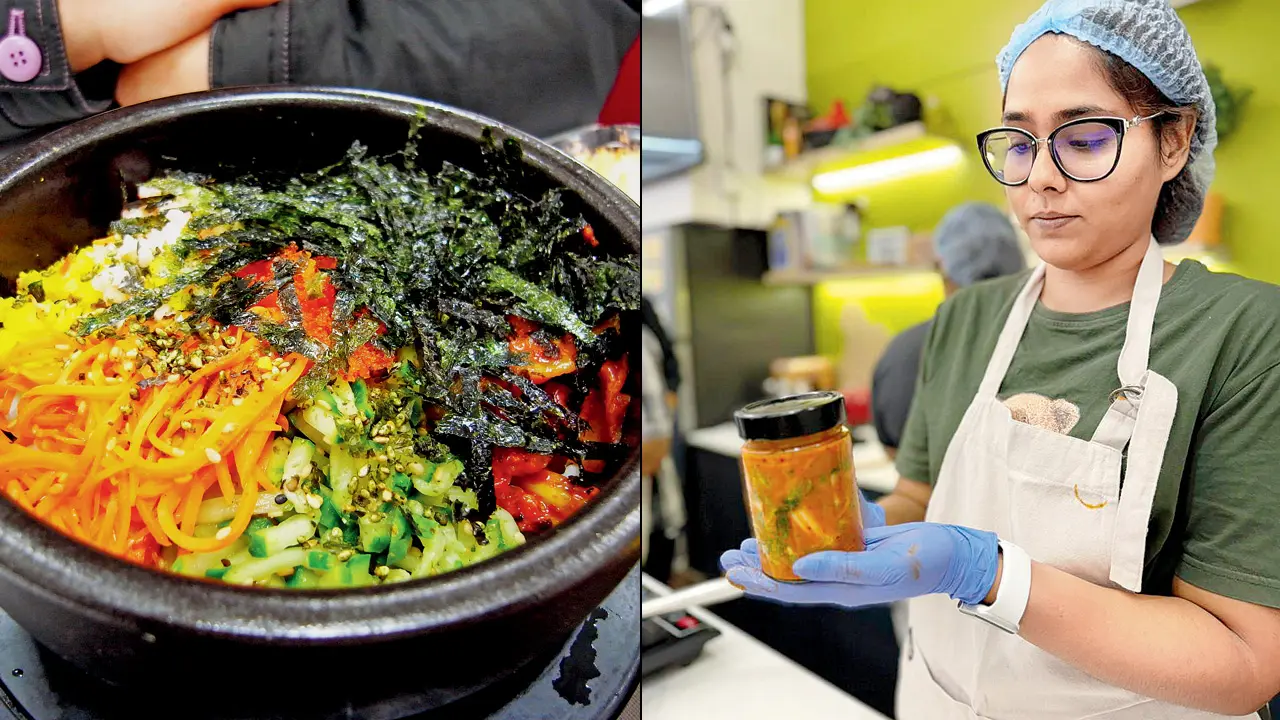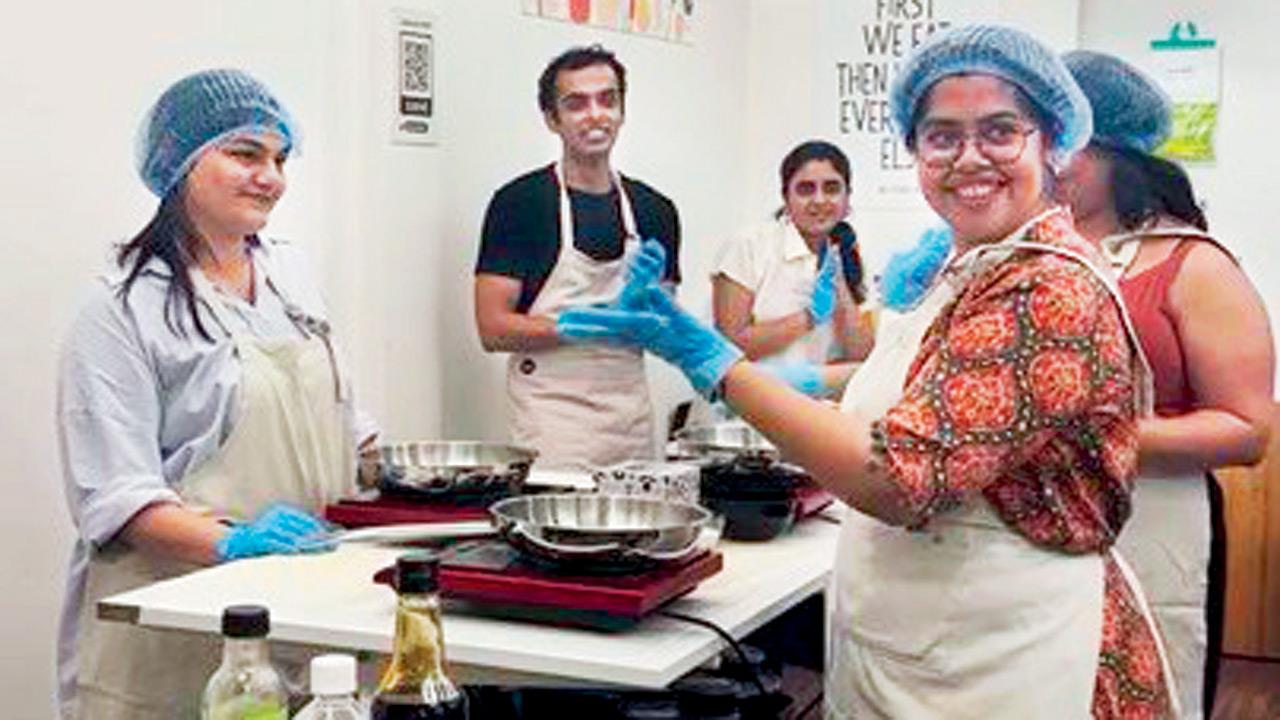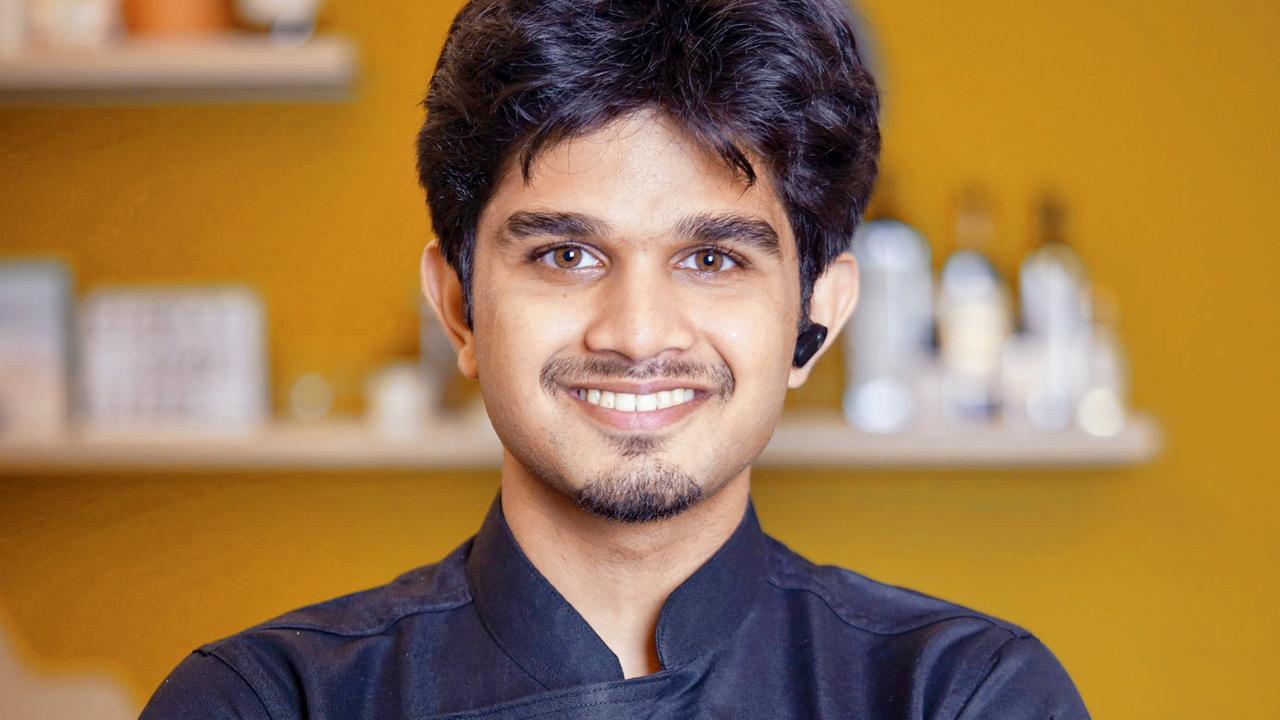A K-drama inspired food workshop in Mahim will introduce you to popular comfort food from the East Asian nation

Bibimbap platter (right) a participant with her kimchi preparation. Pic courtesy/Wikimedia Commons
K-drama have influenced foodies as well as web series junkies with their cheesy romance and eclectic fare. Nowadays, while strolling around in a supermarket, you are bound to find different brands selling kimchi and instant ramyeon, which are some of the most common dishes in Korea.
Urban Platter, a food platform, will conduct a special workshop where participants get hands-on experience in making Korean kimchi and bibimbap. Rahul Phalke, a culinary consultant and chef, will be conducting the workshop. He explains how kimchi is an important part of any Korean spread, “In Korea, people make kimchi once a year. Families get together and make kimchi from scratch for the entire year. They store it and let it ferment for a long time. It’s a very hearty and wholesome process.”

Participants at a previous workshop. Pics courtesy/UrbanPlatter
The chef will also guide participants on how to make vegetarian bibimbap, a one-bowl dish that is packed with all kinds of vegetables, and is served with rice. The dish is considered to be a comfort food, and is a staple in scenes from popular K-dramas. Phalke credits pop culture for the rising interest for Korean cuisine in Mumbai. He says, “In the past two to three years, K-drama and K-pop have been picking up a lot of popularity among younger as well as older generations.”
To prepare Korean food as delectable as it looks in shows, he suggests, “Get the essentials — short-grain sticky rice (also known as sushi rice), a good quality soy sauce and sesame seed oil, gochujang, which is essentially a fermented chilli paste, and Korean chilli powder called gochugaru. With these stocked in your pantry, you can get the foundation right for almost any Korean recipe you want to try.”
 Rahul Phalke
Rahul Phalke
He adds, “Embrace fermentation. Korean food relies a lot on fermented foods like kimchi. You can use a variety of vegetables, which will taste better when fermented. Who knows, you might even fall in love with that vegetable you never liked!” Phalke encourages Korean food enthusiasts to be experimental, “Try out recipes to see what you like. Korean food is all about a balance of flavours, but you can always adjust the recipe according to your taste preferences. If you’re not a fan of spice, use less gochujang, and vice versa.”
ON May 24; 11 am
AT C7 basement, new Udyog Mandir, 2, Mogul Lane, Bethany Co-Operative Housing Society, Mahim West.
LOG ON TO district.in
COST Rs 1,000
Stirring the K-drama pot

Lee Jun-ho in Wok Of Love. Pic courtesy/@Koreandramadubbed
>> Okay to Not Be Okay
Its lead character, Moon Gang-tae, settles for bibimbap as his
comfort food during emotional scenes.
>> Let’s Eat
In the first episode, the lead character Hua Hin enjoys a lovely spread of Korean dishes like fish soup, salt-based shrimp, snapper-topped fish sauce, and crab fried rice.
>> Wok Of Love
The lead character, Seo Poong, is seen gracefully showing off his cooking talent by preparing gourmet dishes like Peking duck and crab fried rice.
 Subscribe today by clicking the link and stay updated with the latest news!" Click here!
Subscribe today by clicking the link and stay updated with the latest news!" Click here!










